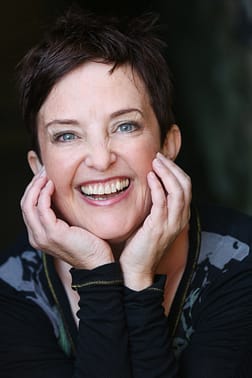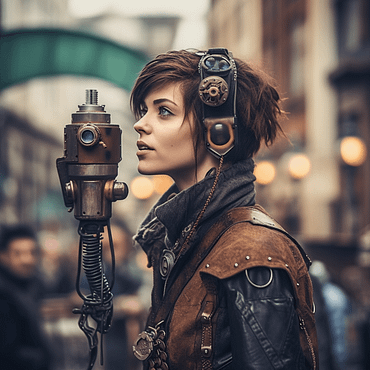The Importance of Voice Over in Film and TV
Voice over is an essential aspect of film and TV production that plays a crucial role in storytelling. Whether it’s providing narration, delivering inner monologues, or voicing animated characters, voiceover can enhance the emotional impact of a scene, provide context and exposition, and even serve as a character in its own right.
Let’s look at the various ways that voice over is used in film and TV and learn more about the behind-the-scenes process of bringing these performances to life.
What is Voice Over, and How is it Used in Film and TV?
Voiceover refers to the technique of recording dialogue or narration in post-production and laying it over footage.
This technique can be used for a variety of purposes, such as providing exposition, conveying a character’s thoughts or emotions, or providing a commentary on the action.
In film, voiceover is often used to set the tone, provide backstory, or add a layer of complexity to a character. In TV, it can be used to introduce episodes, recap previous ones, or provide a voiceover for a character’s actions or thoughts.
The Process of Recording Voiceover

Cromerty York – Female Voice Over in English, German, French, Spanish and Welsh
So let’s take a behind-the-scenes look at the process of recording voiceover.
The process begins with a script, which the artist will read through to familiarize themselves with the material.
Next, they will record a sample or demo of the script, which they will send to the client or director for approval.
Once approved, the artist will record the final version of the script in a recording booth or studio, where they will have access to high-quality sound equipment and professional recording software.
The Importance of Quality Equipment and Soundproofing
The quality of the recording equipment and soundproofing is critical to the success of a voiceover performance.
Even the slightest background noise or interference can ruin an otherwise excellent recording. That’s why recording studios are specially designed to be acoustically treated, with materials such as foam and fiberglass used to absorb sound and prevent echoes.
The Importance of Vocal Techniques and Performance
In addition to quality equipment and soundproofing, vocal technique and performance are also essential to a successful voiceover performance.
A professional voiceover artist needs to have excellent diction, timing, and pacing, as well as the ability to convey emotion and nuance through their voice.
They must also be able to take direction and adjust their performance accordingly, as the client or director may have specific ideas or requirements for the performance.
The Different Types of Voice Over Roles
Voice over roles can be divided into several categories, including narration, character work, commercial voice over, and ADR (Automated Dialogue Replacement).
Narration involves providing a voiceover for a documentary or informational video, while character work involves voicing animated characters or providing voices for video games.
Commercial voice over work involves recording voiceovers for advertisements or promotional videos, while ADR is used to replace dialogue in post-production when the original recording is unusable.
The Challenges of Matching Voiceover to Footage
One of the biggest challenges of voiceover work is matching the performance to the footage.
This can be particularly difficult when recording ADR, as the artist must match their performance to the lip movements of the actor on screen.
This requires a high level of skill and precision, as even a small deviation from the lip movements can make the performance look out of sync.

Do You Need A Great Female Voice Artist?
The Importance of Collaboration and Communication
Another essential aspect of voiceover work is collaboration and communication.
As a professional voiceover artist, I need to work closely with the client or director to ensure that the performance meets their expectations. This may involve providing multiple takes or making adjustments based on feedback. Good communication is also important to ensure that the artist understands the tone and style of the project, and can tailor their performance accordingly.
The Evolution of Voiceover
Voiceover has been a part of film and TV since the early days of cinema, but its use has evolved over time.
In the 1940s and 50s, voiceover was often used as a narrative device to provide exposition and context.
In the 1960s and 70s, it became more common to use voiceover to provide inner monologues or to give characters a distinctive voice.
In recent years, voiceover has become increasingly popular in TV, particularly in the form of character narration or commentary.
The Future of Voiceover
As technology continues to evolve, it’s likely that voiceover will continue to play an important role in film and TV.
With advances in AI and voice recognition, it may become possible to create entirely new performances using computer-generated voices. However, it’s unlikely that this will ever fully replace the artistry and nuance of a human voiceover artist (see below!).
The Power of Voice Over
Voice over is a powerful tool that can enhance the emotional impact of a scene, provide context and exposition, and even serve as a character in its own right.
The process of recording voiceover involves a combination of technical skill, vocal technique, and collaboration with the client or director.
Whether it’s providing narration for a documentary, voicing an animated character, or delivering an inner monologue, voice over is an essential aspect of film and TV production that helps to bring stories to life.
How Can I Help?
As one of the UK’s leading female voice over artists, I am able to provide a voiceover to your exact spec.
You can even listen in to my professional studio and “tweak” the recording as I go along, to make sure the tone and pacing is exactly what you need.
I am able to produce finished audio in the following:
• British English voice overs
Let’s face it – AI can’t do this!!
Give me a call, and, together, let’s bring your script to life!
